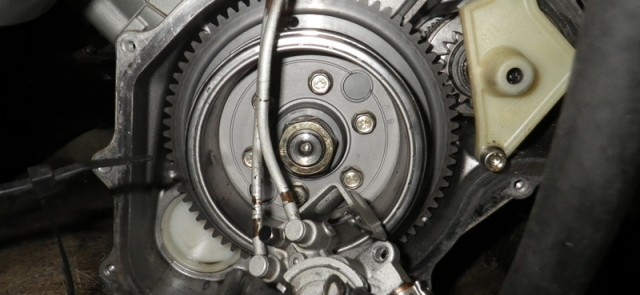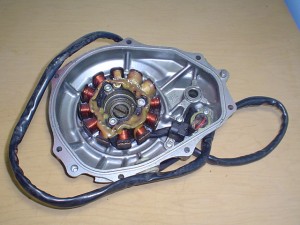How a Stator works – PWC Jet Ski Stator
Generators come in different physical and electrical configurations, and they can be used in different applications. How a stator works – a generator is a type of device that can convert the mechanical energy that is obtained from some external source into an electrical energy. It should be noted that the generator does not “create” electrical energy. It just uses the mechanical energy which comes to it, so it can move the electric charges through the electric circuit. Today`s generators work on the electromagnetic principle.
The main components of the stator generator can be generally classified as in the following: Engine, Alternator, Fuel System. Voltage Regulator, Exhaust and Cooling System, Lubrication System, Battery Charger, Control Panel and Main Assembly.
The engine is the main source for the mechanical mechanical energy input to the generator. The engine size and the highest power that the generator can supply are proportional. There are a few things that you should consider when you assess the engine of the generator. For example, the type of fuel used, the overhead valve engines versus non-overhead valve engines, engine cylinders etc. Overhead valve engines are better than the other engines, but they are also more expensive. Their main advantages are that they have more compact designs, they last longer, they are simpler and user-friendly and they have low emission levels.
Here’s how a stator works – the alternator is the part of the generator that is producing the electrical output from the mechanical input that is being supplied from the engine. It has moving and stationary parts encased in a metal or plastic housing. All the components are working together to make a movement between the electric and magnetic fields, which in turn generate electricity. The alternator is consisted of stator and rotor. The stator is the stationary, immovable component. It is consisted of set of electrical conductors that are wounded in coils and are placed over an iron core. The rotor is the moving part that creates a rotating magnetic field by induction, by permanent magnets or by using an exciter.
Voltage regulator and the fuel system, as their name suggests, control the capacity of the generator`s output voltage and the fuel that is needed to ensure smooth running. The cooling and exhaust system help in cooling off the heat that is generated by the generator, as well as ventilating the heat that is created when the different components heat up from the work of the generator. The generator emits exhaust fumes with some toxic materials and they also get properly managed by the exhaust system.
Because the generator is consisted of moving parts in its engine, they must be lubricated in order to smoothly run for a prolonged period of time. The engine of the generator is getting lubricated by oil that is stored in a pump.
Depending on the PWC model there are different types of generators manufactured by different companies. You should always consult a professional technician if you think about making some adjustments or modifications inside the watercraft.
I hope this article was informative for you in your search to understanding how a stator works.













